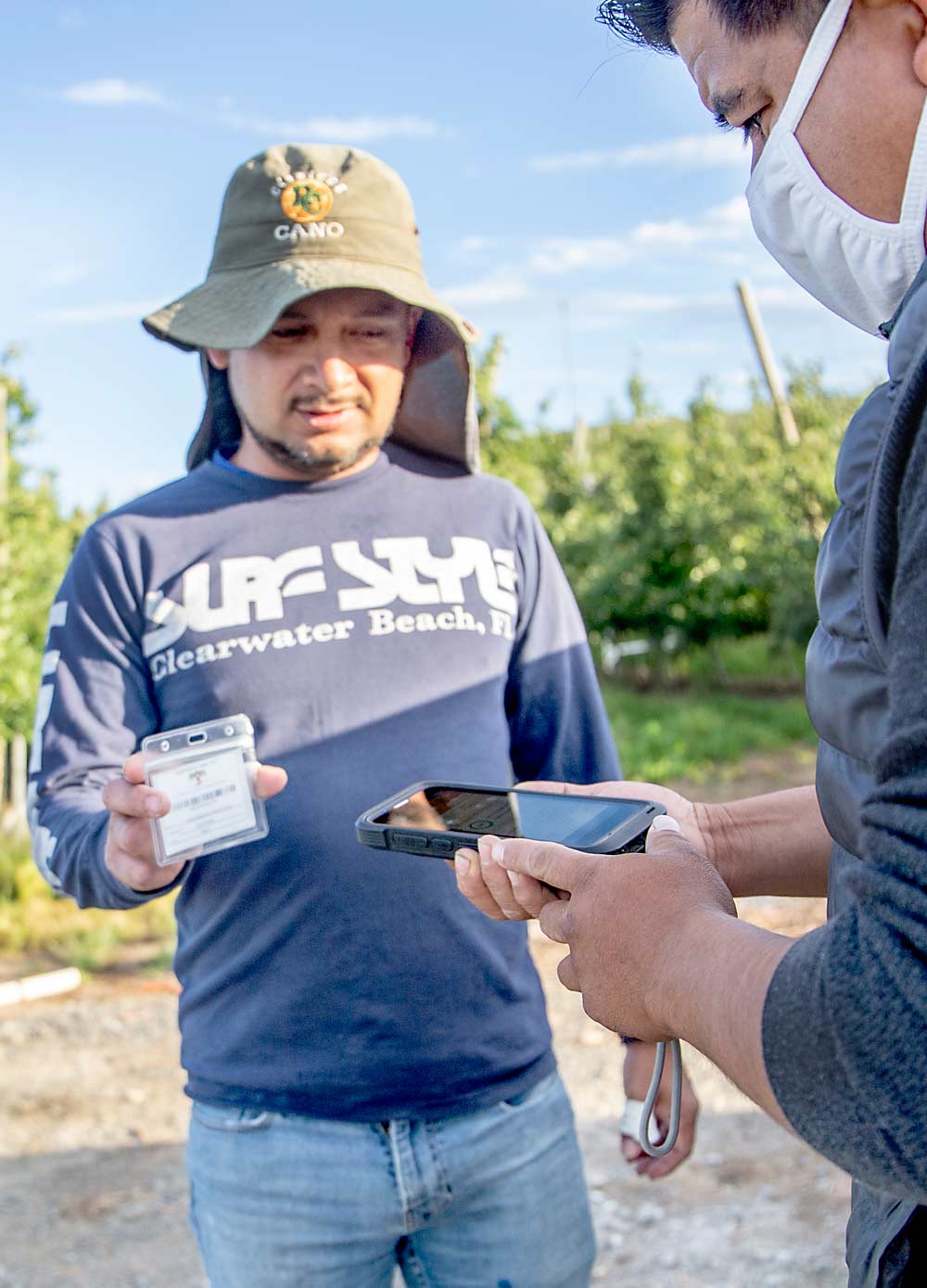
When FirstFruits Farms in Prescott, Washington, decided to invest in a labor tracking app, it chose PickTrace for its scalability and customer support. Sundquist Fruit and Cold Storage in Yakima, Washington, chose FieldClock because it worked on existing employee phones and devices. Jimmy Zingler of Zingler Farms in New York went with Hectre in part because the CEO visited him in person and seemed willing to take feedback.
Labor apps that promise to cut down on paperwork have proliferated throughout the orchard industry, and growers faced with complicated new regulations are adopting them at a rapid rate. But with ever more options to choose from, how are growers finding the one that works best for them?
To make that decision easier, Cody Bishop, orchard technology and process manager for Price Cold Storage and Packing in Yakima, recommends growers understand their own goals, ask vendors a lot of questions and quiz other growers already using apps.
“Hearing from other growers is the best way to know if it’s going to work for your farm,” said Bishop, regarded as one of the tree fruit industry’s experts on technology adoption.
While moderating a virtual panel discussion about choosing labor apps at the Washington State Tree Fruit Association annual meeting in December, Bishop urged potential app customers to gauge whether a vendor is able to adapt to new wage models and regulations, such as overtime requirements in California, Washington and New York. Also, Bishop suggested choosing an app that can calculate true labor costs for any orchard task in real time, before the data reaches payroll software.
And select a vendor who wants to learn from you as much as you learn from them, Bishop said. “What is their goal?” he said. “Are they just trying to sell something and leave or trying to work with you in a relationship?”
Bishop consults for PickTrace, which Price Cold Storage chose for its labor app.
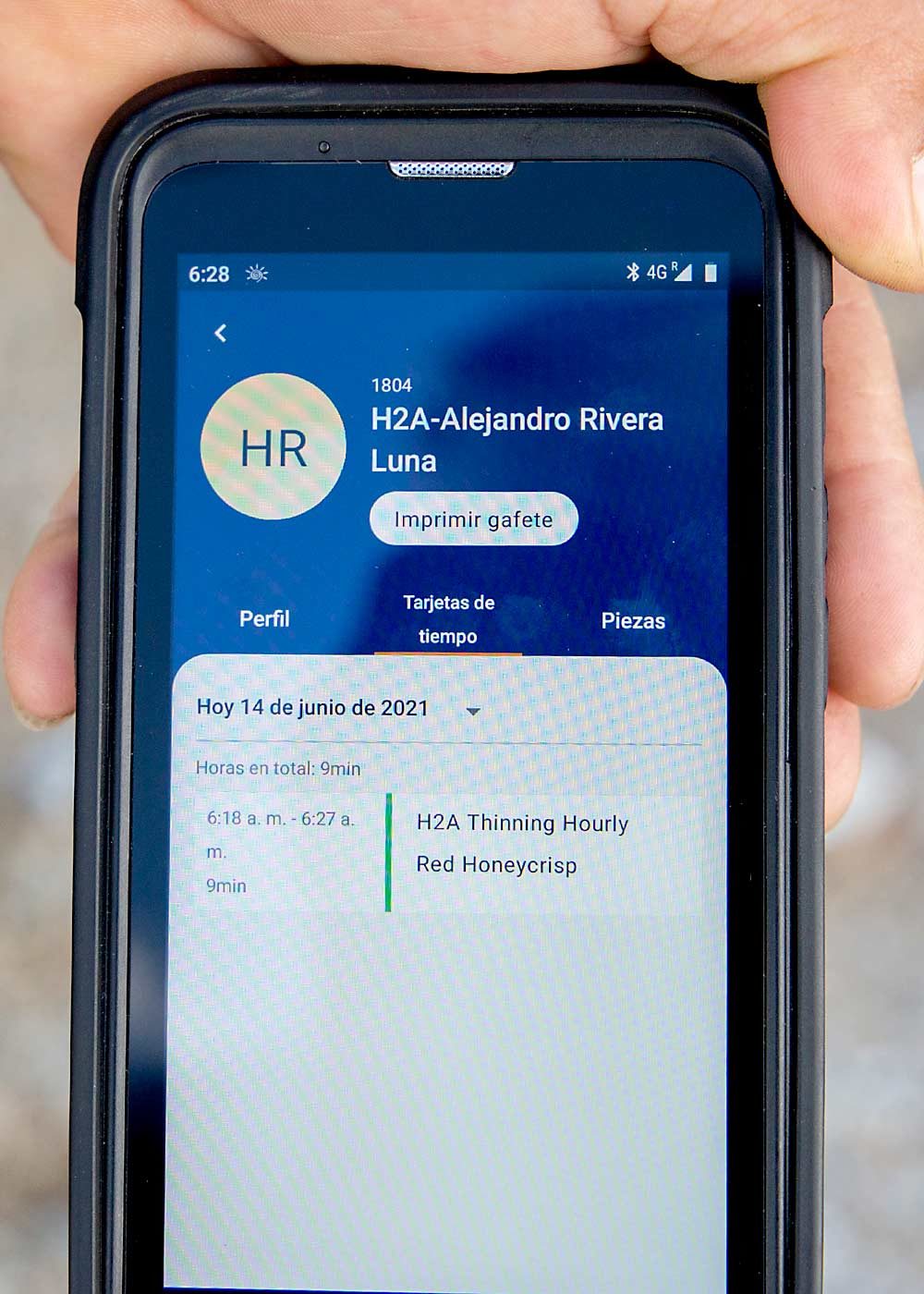
Decisions, decisions
FirstFruits tested a few other labor apps before settling on PickTrace of Glendale, California, said Steve Bradbury, payroll manager.
PickTrace was simple for crew bosses to use, focused on orchard operations and, as a company, appeared to have the capital for future investment to handle large scale operations, Bradbury said. With 6,800 acres, FirstFruits is one of the largest apple producers in the country and the largest employer in Walla Walla County.
Also, PickTrace provides the equipment. This year, First Fruits has equipped 40 crew bosses with a pocket device — basically a smartphone with only one app. Each crew boss uses it to manage his or her 48 or more employees, checking them in each morning by scanning a barcode on their badge, logging their collective breaks, changing their tasks and checking them out. PickTrace issues the devices and is responsible for maintaining and updating the software.
One of Bradbury’s favorite aspects of PickTrace is that the company listens to him as much as he listens to them.
“I’m like a nonpaid consultant for them,” he said with a laugh. So far, FirstFruits has used PickTrace in its orchard, but Bradbury would like to introduce it to the warehouse, which uses a different tracking software now. Currently, PickTrace charges its customers per acre. That would need to be modified to work in a warehouse, Bradbury said.
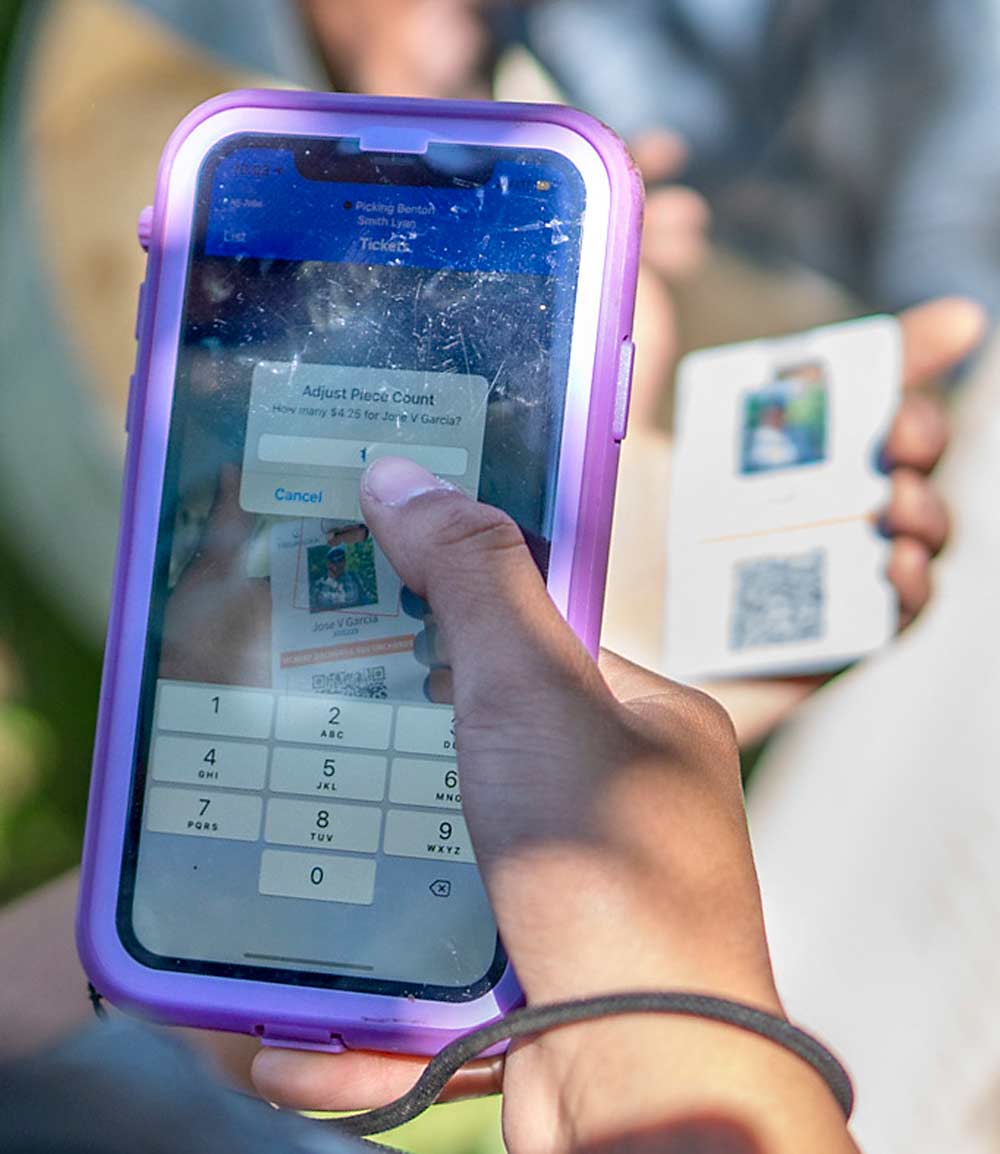
Andrew Sundquist, president of Sundquist Fruit, began using FieldClock about four seasons ago. He was one of the first adopters.
Sundquist had already issued iPhones to many of his managers and crew bosses and didn’t want to make them carry another device. FieldClock did not require that. The app charges a fee per clocked-in employee each month, so growers only pay for working employees.
FieldClock has done more than remove the need for paper timesheets, Sundquist said. The amount of data accessible within seconds helps him make decisions more quickly.
He suggested farms and production companies interested in adopting labor tracking apps be committed to making a lot of changes and find an executive-level champion for it.
“Have somebody in the organization driving the change. If you don’t, it will take a long time,” he said.
Jimmy Zingler, owner of Zingler Farms in Western New York, tested about 15 software platforms and apps prior to choosing Hectre a couple of years ago. Not all of the products focused on agriculture, he said, and many of those that did were too generalized. Many of the companies were startups and their products were not yet fully developed.
In early July, Zingler was named a product adviser for the New Zealand-based Hectre, which focuses specifically on tree fruit growers. When Zingler first contacted the company in 2019, its founder and vice president of sales visited him in person, explained their vision, and made known their desire to incorporate grower feedback into the product. That willingness to collaborate was a significant factor in Zingler’s decision to use the Hectre app, he said.
Zingler’s supervisors use the Hectre app to record employee hours by task and location. He’s seen significant increases in the quantity and quality of farm data since he started using it, which makes for better-informed decisions when planning for the future. Hectre also allows him to analyze information much faster.
“In the past, I wasn’t able to so easily analyze information on tasks at the same time the tasks were being performed,” he said.
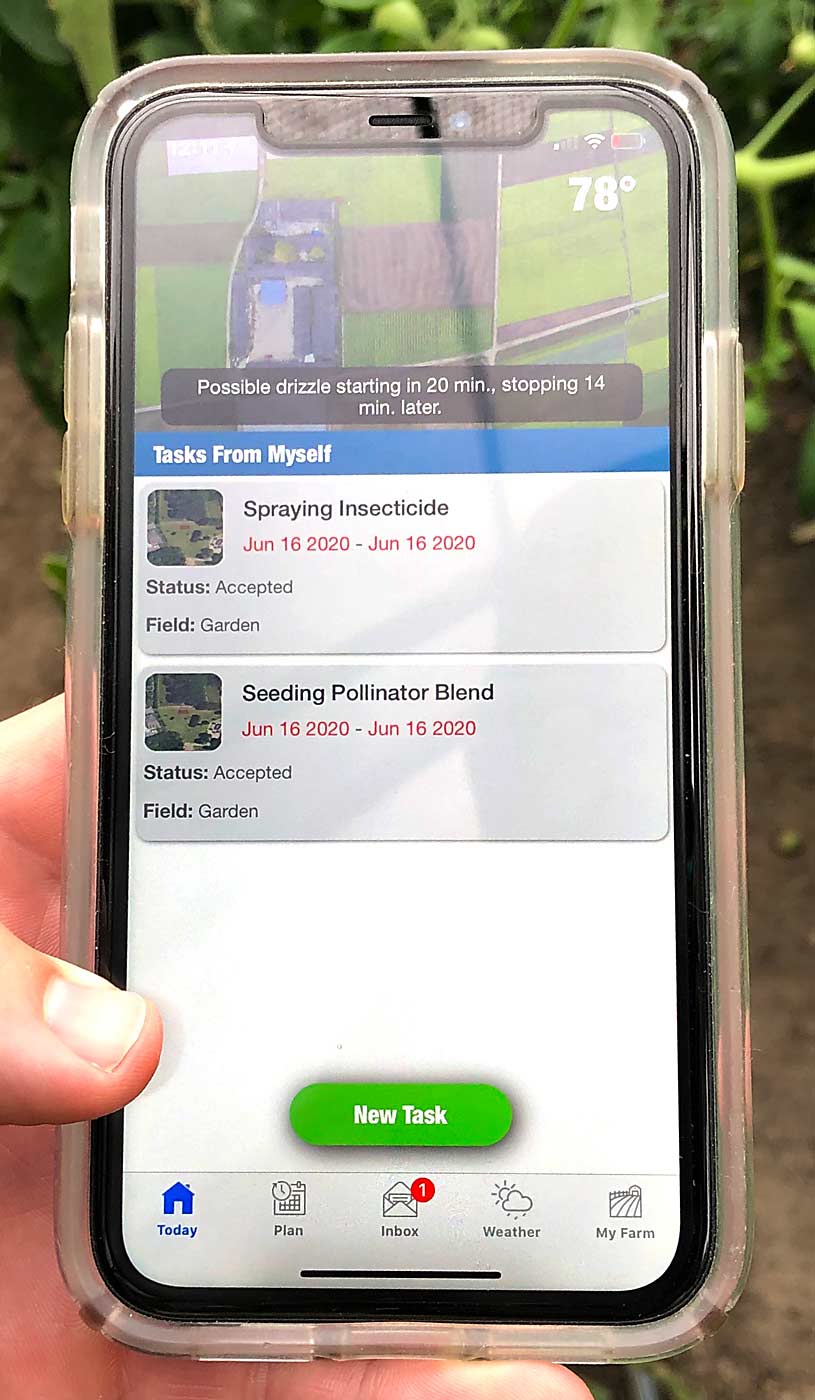
Zingler said Hectre has other features that are useful for harvest. It can be used to track quality control, and it also features geotagging tools. Hectre’s separate vision software, Spectre, analyzes photos to produce fruit sizing and color reports within a few seconds (see “Evolutions in imaging”). He plans to add spray records to his use of Hectre in the future.
Robert Brown, owner of Orchard Dale Fruit in Western New York, started trialing a system from New York startup Agri-Trak this spring. He chose Agri-Trak over other systems because it was more cost-effective, and also because it was easy to use, practical and, like most of the apps, toggles between Spanish and English, he said.
For several years, Brown and his wife, Beth Brown, have been using a labor management system from the company FreshQC to manage their berry crews. The system works well for that particular task but isn’t really designed to track the hours of employees who change jobs throughout the day.
About 25 of Brown’s employees, roughly two-thirds of his workforce, change tasks during the day. At times, they might be working with a crew of five or 10 other people; at other times, they’re on a tractor by themselves. Before using Agri-Trak, he was still tracking their hours with paper sheets, he said.
—by Ross Courtney and Matt Milkovich

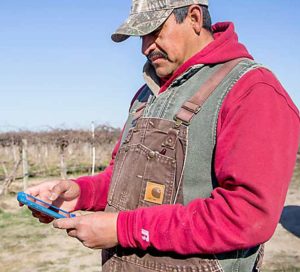
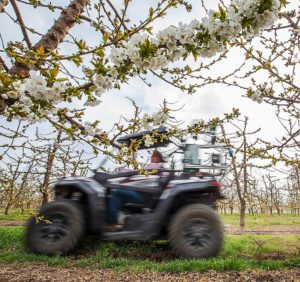





Leave A Comment